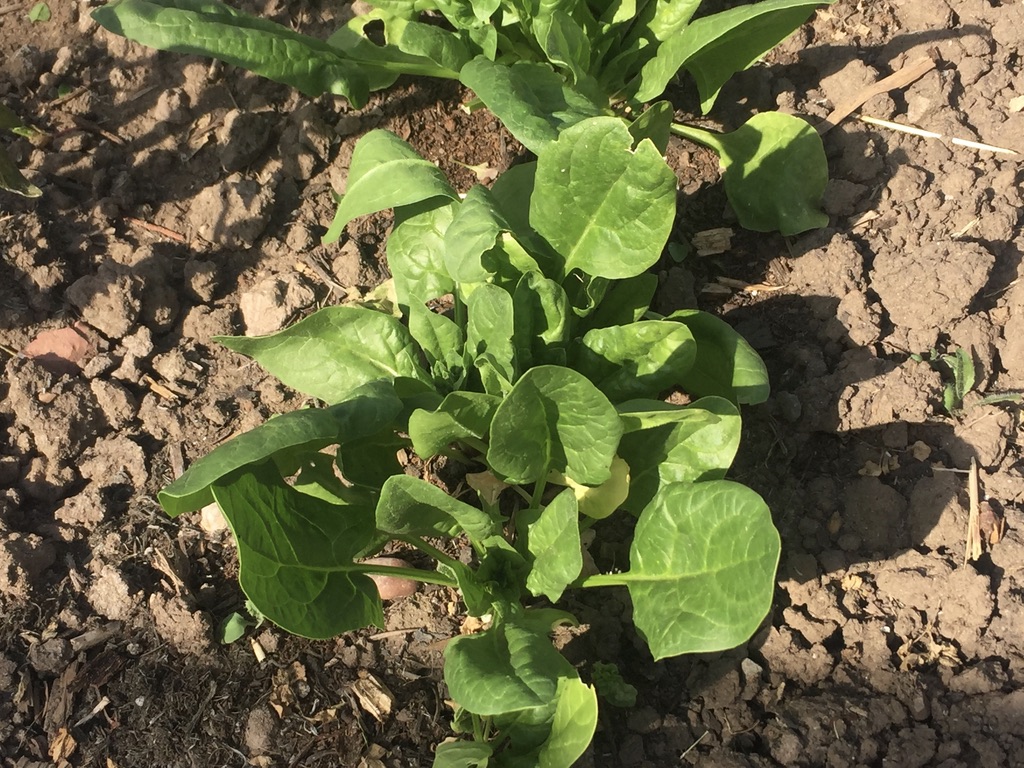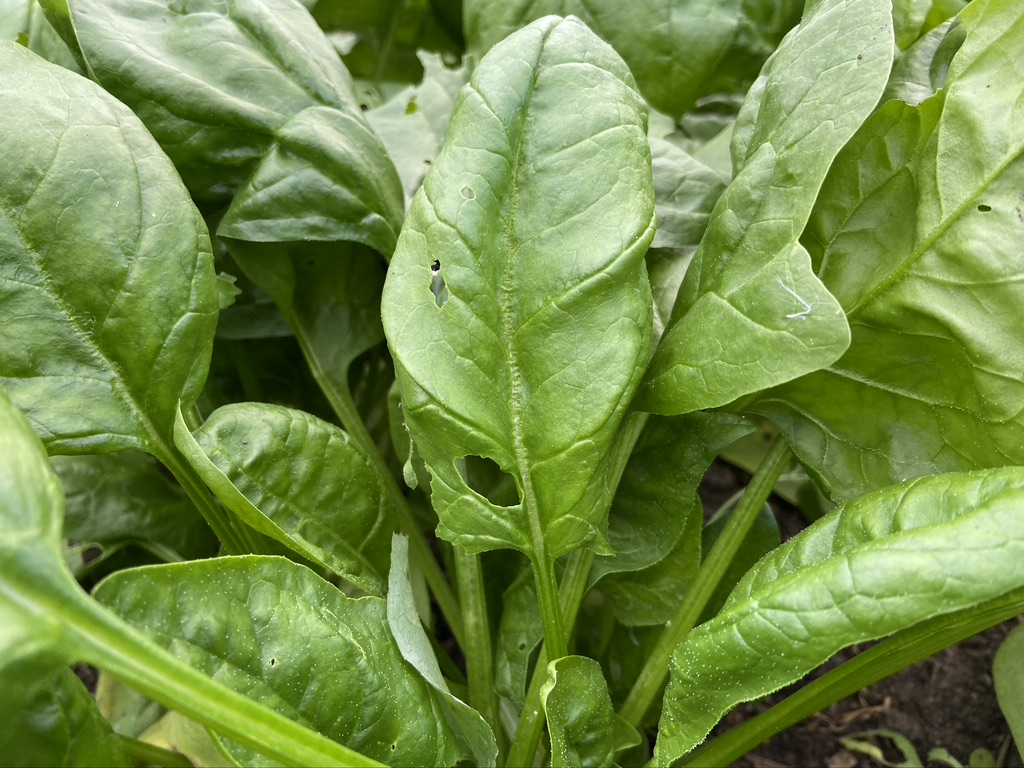There are a few vegetables on the allotment patch which are known to be a bit of a diva and a challenge to grow. Cauliflowers are one, surprisingly, carrots are another. The one that many avoid however is spinach which has a bit of a reputation of going from nothing to bolting in the blink of an eye.
This is a little unfair to spinach. It is true that spinach can bolt very quickly in summer but with a good variety, careful successional sowing and a shady spot plus some protection in the winter there is no reason why you shouldn’t pick spinach all year round.
Amazon F1 is an excellent variety for all year round growing. It was the first variety of spinach I have had much success with and is one of the few varieties I will break my no F1 rule for. I have found it slow to bolt. It is good for both baby leaves and also cooking and it is mildew resistant. A good allrounder.

In the kitchen
Amazon can be used as both baby leaves and also cooked. You will find home grown spinach produces much less water than supermarket and is great to cook with.
For baby leaves use them lightly dressed in olive oil and vinegar as a salad. You could use them as an accompaniment to Sweetcorn fritters with mango salsa , Gnudi with pumpkin and panchetta or in Summer Rolls
To cook lightly stir fry for a few minute or sauté with little more than a dash of water and a knob of butter in a pan. Spinach can also be microwaved incredibly successfully, blast on full power for 10 seconds. Check it and repeat if needed.
You could try adding cooked spinach to Spring Vegetable Gyoza or as an addition to Falafel.
Yield and plant health
Amazon has an RHS award of garden merit at the time of writing. They describe the plants as vigorous, bulks well with a good glossy dark colour and mildew resistant.
On average 8-10 spinach plants will give a serving for two every week for about 3-4 weeks.
All spinach can suffer from slugs. Protect the young plants with nematodes or slug traps or organic slug pellets if you must. Older plants will not need protecting.

Suppliers
Very widely supplied but can be found

How to grow
A clever gardener can eat spinach almost all year round. Sowing little and often (every 2-3 weeks) is the key so you have a succession of leaves coming along as older plants go to seed. Winter crops and early spring sowing will benefit from frost protection, growing under fleece or in a polytunnel or greenhouse.
Spinach does not require a sunny spot and later showings will benefit from some shade to reduce bolting (flowering) which happens in higher temperatures.
There are two seasons to spinach sowing. Early spring Feb (undercover), March to May and the again in late summer early autumn, August and September for winter cutting.
Spinach enjoys a fertile moisture retentive soil so they will benefit from mulching and the addition of a thick layer of manure or compost in late winter, early spring before sowing.
Sow seeds where they are to grow. Unfortunately module sown plants will be more likely to bolt. Sow three seeds, 2.5cm deep, 5 cm apart in rows 30cm apart. If you are only going to be growing baby leaves for salad you can sow much closer together but they will bolt much sooner. Gently water in and keep well watered until germination occurs. Germination can be a little erratic but you should see signs after 10-15 days. Soaking the seeds and leaving on kitchen roll for a few days before planing can help germination and is very useful if outdoor temps are below 10c or above 20c. If more than one seed germinates, thin to one per station. Thinnings can be eaten.
Keep spinach well watered as it grows. You can start harvesting baby leaves for salad or wait until leaves have grown large for cooking.
Problems
All spinach can suffer from slugs. Protect the young plants with nematodes or slug traps or organic slug pellets if you must. Older plants will not need protecting.
Mildew can be an issue for some varieties. Choose mildew resistant varieties.
Bolting early is the most common issue for spinach. Sow small and often to ensure a constant supply. Transplanting spinach or shocking by allowing it to get to hot or too dry are the most common causes. Some varieties are more likely to bolt than others.